As I got all my Fall décor out a few weeks ago, I realized I didn’t have a table runner yet. I’ve made several machine free quilted ones for other holidays (here and here), but this time around I wanted to try something new…something different…something easy. This is what I came up with:
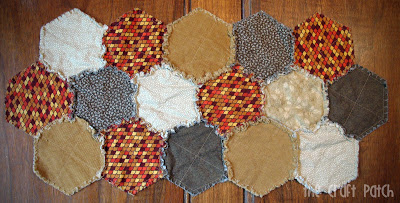
A hexagon rag quilt-style table runner using scraps of fall-ish fabric. I even threw in a little corduroy just because it screams Fall to me.
Here’s how to make it,
Step 1: I made a 6 inch hexagon shape in Word, printed it out and used it to trace the shape onto the backs of the fabric using a ball-point pen. Such a sophisticated system, I know. 🙂 I cut out a total of 32 hexagons.

Step 2: I sewed two hexagons together with right sides out, wrong sides touching. On a hexagon the stitches go from one point to the opposite point and then one center of the flat side to the other center flat side. That makes an X in the middle.
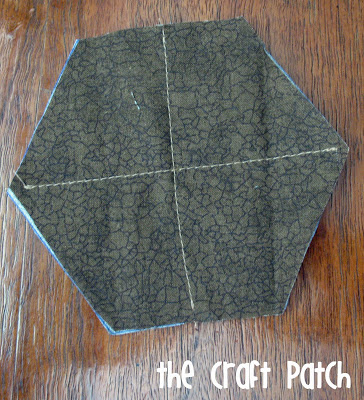
See how both sides of the sewn piece have right sides out?
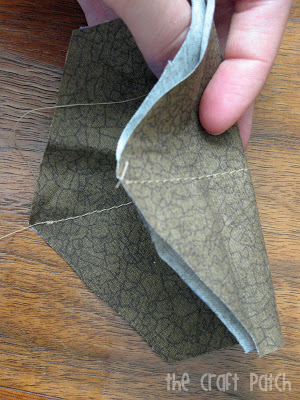
Step 3: I laid out the double-thickness hexagons out into the pattern I wanted. The grid overlay on this picture shows how I lined up the stitches. All the stitches that went through the point go the same direction and all the stitches that went through the flat side go the other direction.
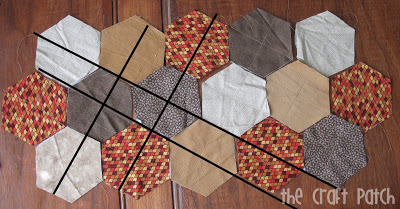
Step 4: Start sewing the hexagons together! The tricky part about this step is making sure all the seams end up on the same side of the finished table runner. To avoid mistakes, I laid out the whole project next to my sewing machine, pinched the seams together in the way they were supposed to be sewn, brought them to my machine, sewed them, then took them back to the laid out pieces and pinched the next seam in the way it should be sewn. This method worked great…I didn’t have to unpick a single stitch!
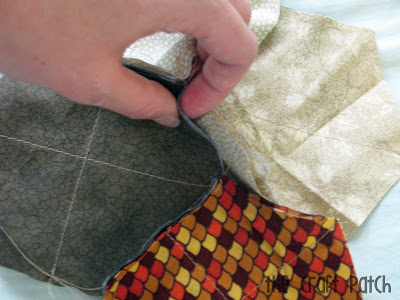
When sewing the hexagons together, don’t sew off the edge of the fabric… see how this picture shows the stitches meeting in the corner, not extending past each other?
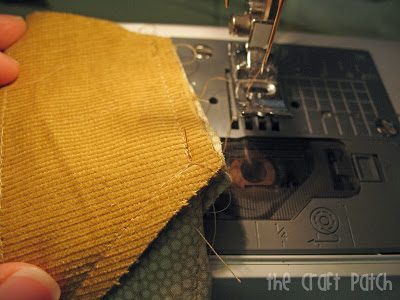
Step 5: Snip all the exposed seams with a pair of sharp scissors, making sure not to snip past the stitch lines.

Step 6: Wash the runner. All those little snips you made will help the fabric to fray. After you remove it from the dryer, you’ll have to do some tidying up…cutting loose threads, etc. but then you are done!

This same method can be used to make regular square rag quilts or table runners. It’s best to use cotton or flannel for these projects (although apparently corduroy works well, too).

Comments & Reviews
Love this! Trying it this week! Thank you!
Have you ever seen a bedspread made with fabric in hexagon shape. I have two that were made when my Mom and Aunt worked in a Shirt Factory during the 30’s.
That’s so neat!